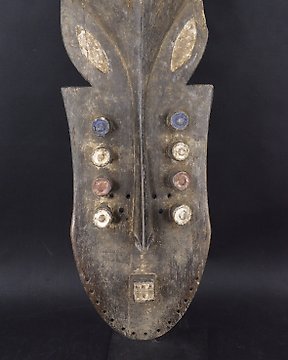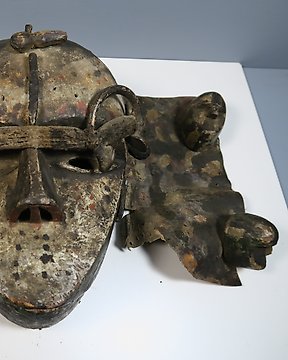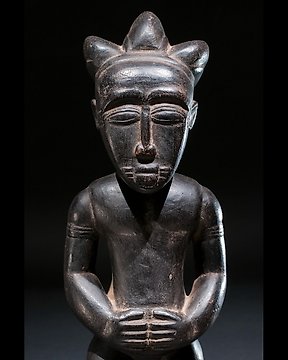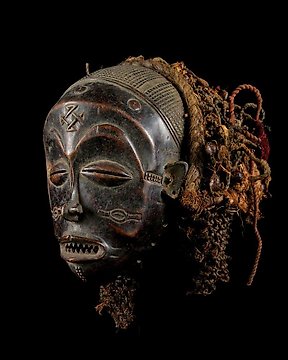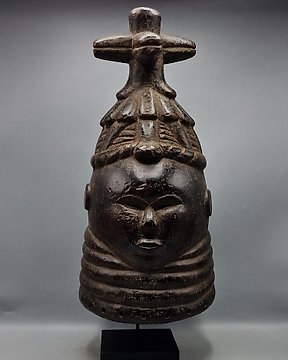grande statua di un'antenata femminile - Bété - Costa d’Avorio
N. 82821323
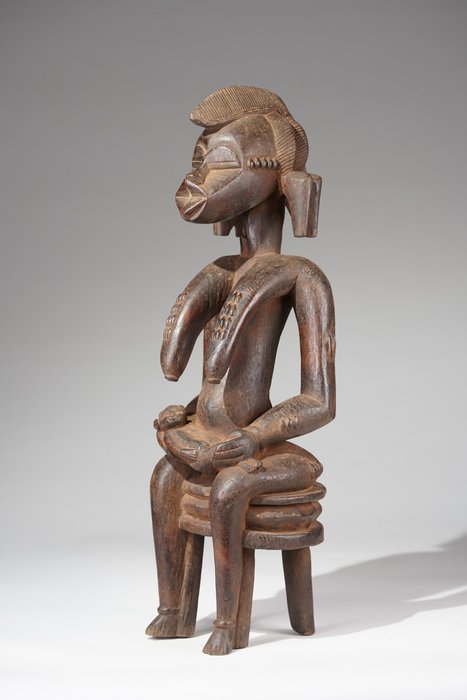
Senufo - Costa d’Avorio (Senza Prezzo di Riserva)
N. 82821323

Senufo - Costa d’Avorio (Senza Prezzo di Riserva)
A Senufo Typeka maternity, Ivory coast, posted on a four legged stool, holding and cradling a child, a columnar torso with hanging breasts marked with scarifications, the thick neck supports an oval head with elongated jaw line fine facial features, the arched coiffure is striated, more scarifications on the cheeks and sides of the face, arms and side of the buttocks; shiny patina, signs of use. Certificate of origin and provenance.
"The tyekpa association functions in Senufo culture primarily as a funerary society. A sculpture is but one element of complex funerary celebrations that also include music, song, and dance. These elements come together to pay homage to and honor the memory of an elder tyekpa "mother." During the ceremonies, tyekpa members dance with various figurative sculptures such as this mother-child pairing raised high above their head. Due to its prominent visual display in the funerary proceedings, tyekpa figurative sculptures are rather large, some measuring three to four feet in height; this piece is nearly two feet tall.
The Senufo peoples form a complex network comprising more than thirty subgroups with many local variations of language and custom. They occupy a large area of West Africa that spans the national boundaries of Côte d'Ivoire, Mali, and Burkina Faso. Senufo society is patriarchal; inheritance, however, is traced through the matrilineal line. Consequently, the primacy placed on women and their essential maternal role is often reflected in Senufo artistic traditions like this sculpture. The tyekpa association is part of a larger social organization among the Senufo known as Sandogo. Membership in Sandogo is limited to female members of the Senufo community. Senufo life revolves around the Sandogo society and its counterpart, the all-male Poro society. These institutions cut across kinship lines and household ties, creating a social cohesiveness that extends throughout the community."
Source: The MET museum
Potrebbero interessarti anche
- 16+
Questo oggetto era presente in
Come fare acquisti su Catawiki
1. Scopri oggetti speciali
2. Fai l’offerta più alta
3. Paga in tutta sicurezza

